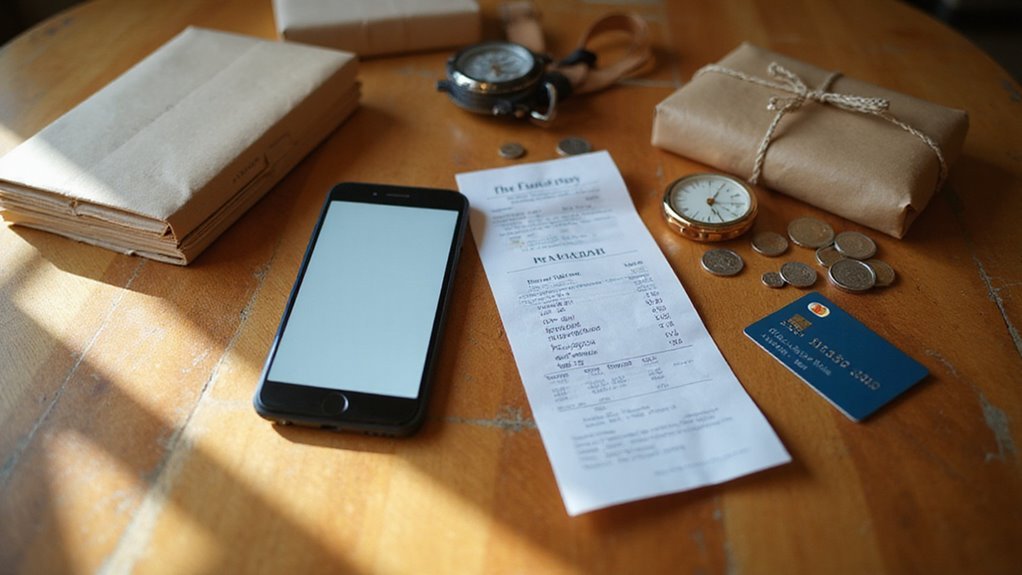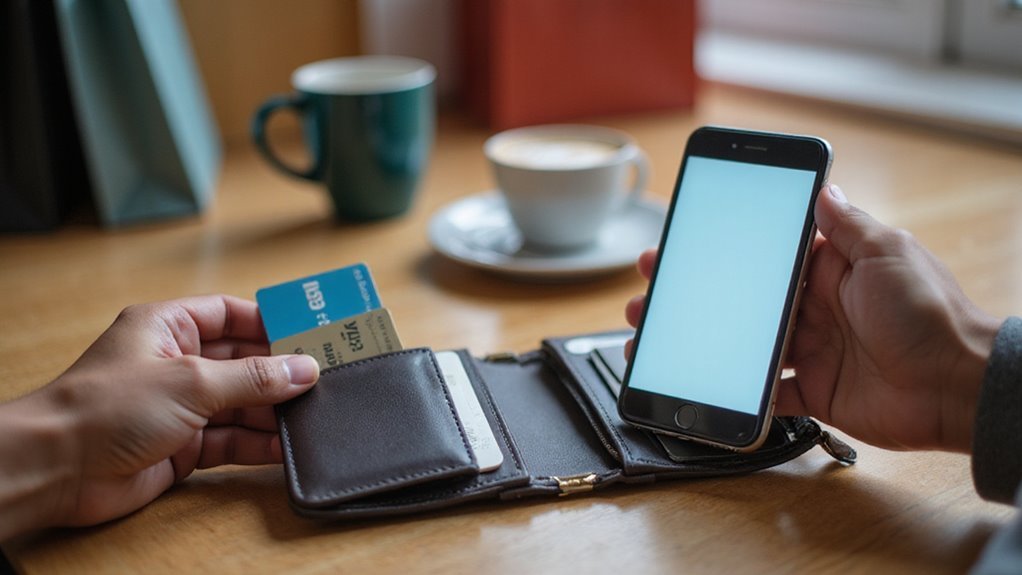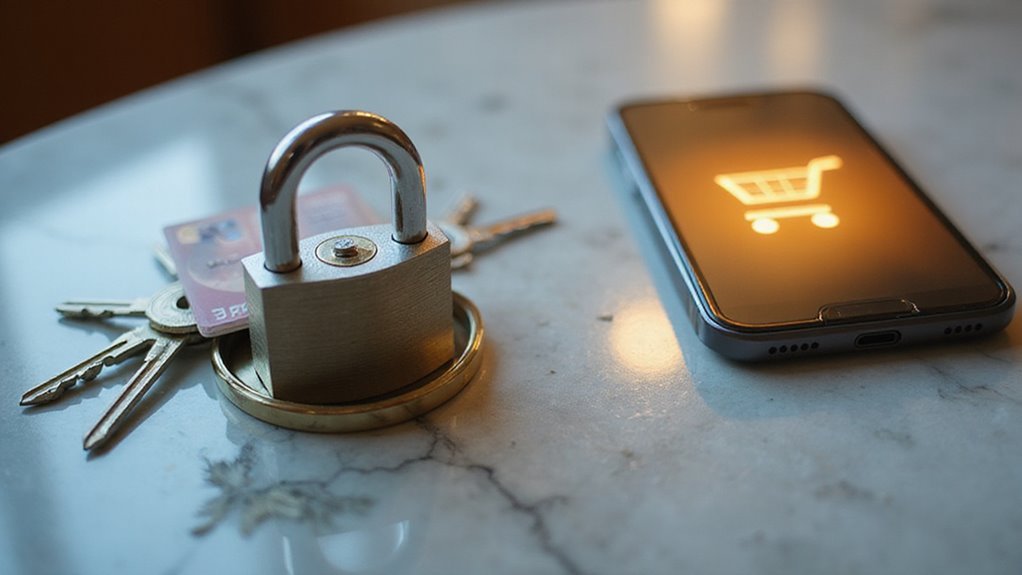


Many people want to buy things now and pay later. Buy Now, Pay Later (BNPL) and credit cards make this easy. But both options can affect your money in different ways. Choosing the wrong one could lead to debt or trouble with your budget.
Spending without thinking can become a problem. Many people sign up for BNPL or use credit cards without knowing the risks. Fees, interest, and missed payments can pile up. This can hurt your credit score and make it hard to manage your money.
Buy Now, Pay Later and credit cards each have strengths and risks, but understanding how they work can help you decide. Comparing their fees, payment rules, and effects on your credit can lead to smarter choices. This blog will explain how both options work and help you pick the best way to shop wisely.

Buy Now, Pay Later (BNPL) lets you pay for purchases in smaller parts over time. You split the total cost into scheduled payments. These payments are often made every few weeks or months. You get your item right away, but pay over time. If you pay on time, most providers do not charge interest. Late payments can result in extra fees.
Approval is usually fast and may need only a soft credit check. BNPL helps you manage your spending if you track payment dates. If you miss payments, you could build up unwanted debt. It’s important to regularly check credit reports to ensure that BNPL activity is reported accurately and does not lead to unexpected issues. It’s important to understand that BNPL loans can influence creditworthiness and may affect your credit report long after your purchase.
Credit cards let you borrow money from a bank up to a set limit. You can use your credit card to make purchases. Each purchase reduces your available credit. If you pay back what you borrow, your credit becomes available again. You must make at least a minimum payment each month. If you pay less than the full balance, you will be charged interest.
Credit cards can help build your credit score if you use them responsibly. If you miss payments, your account may be closed. Using your credit card responsibly may also allow you to benefit from real-time alerts that keep you informed about changes to your credit activity. You can further protect yourself from identity theft by understanding and utilizing security features such as credit freezes.

Credit cards and buy now pay later (BNPL) services have different payment structures. Credit cards let you pay a minimum amount or the full balance each month. You can carry a balance to the next month if needed. Credit cards give you ongoing access to funds for new purchases. BNPL splits your purchase into set installments over a fixed period. You pay a set amount on a schedule until the balance is paid off.
BNPL does not offer a credit line for future use. If you use BNPL, the first payment may be delayed for a few weeks. Each BNPL transaction is a separate agreement. These differences affect how you pay and manage your purchases. Unlike credit cards, using BNPL typically does not help build your credit history unless the provider reports your payments to the credit bureaus. It’s important to note that making on-time payments with either option can impact your overall financial health and credit score.
When you compare interest rates, BNPL services often advertise zero or low rates, while credit cards typically charge higher ongoing interest. You’ll also need to watch for late payment penalties, which can differ significantly between the two options. In addition, credit cards may include annual fees or hidden charges that aren’t always present with BNPL plans.
It’s important to remember that APR includes interest rate plus additional fees and charges, so comparing APRs between BNPL and credit cards gives a clearer picture of total borrowing costs. When deciding, consider that credit monitoring services can help you track how either option impacts your credit score and alert you to any suspicious activity.
Interest rates and fees decide how much you really pay for BNPL and credit cards. BNPL usually offers 0% interest if you pay on time. If you miss payments, BNPL providers may charge 10% to 30% APR. Credit cards typically have interest rates between 16% and 25% APR. Some credit cards offer 0% APR for a short time. Knowing these ranges helps you compare costs.
Late payment penalties for Buy Now Pay Later (BNPL) services are usually lower than those for credit cards. Credit cards charge late fees ranging from $25 to $40. They may also increase your interest rate if you miss a payment. Missed payments can be reported to credit bureaus, which can lower your credit score.
BNPL services usually charge fixed late fees between $5 and $15 per missed payment. Most BNPL providers do not charge interest on overdue amounts. If you miss payments often, you might lose access to BNPL or have your account suspended. Both types require careful payment management to avoid extra costs.
Hidden and annual fees can increase the cost of using BNPL services or credit cards. Credit cards usually charge an annual fee, but most BNPL services do not. BNPL providers might charge extra for missed payments or account reactivation. Credit cards sometimes add fees for cash advances or foreign transactions. Both options may include other service fees, so you should always check the terms carefully. If you want to avoid surprises, read all fee details before choosing a payment method.
Credit cards and Buy Now Pay Later (BNPL) affect your credit score in different ways. Credit card payments and balances appear on your credit report. On-time payments can improve your score, while high balances may lower it. Most BNPL services do not report to credit bureaus if you pay on time. If you miss BNPL payments, some lenders may report this, which can hurt your score.
Start Free Credit Monitoring Now
If you want to build credit, credit cards are more helpful. BNPL is useful if you want simple financing with less impact on your credit. Maintaining on-time payments and low credit utilization on credit cards is especially important, as these factors have a major influence on your overall credit score. For those seeking personalized match recommendations, finding loan or financing options that align with your credit profile can support your broader financial goals.

Buy Now Pay Later (BNPL) and credit cards have different approval processes and eligibility rules. BNPL services usually approve you quickly. These services often ask for only basic personal details. Some BNPL providers may do a soft credit check, but many do not. Because BNPL providers rarely require a minimum credit score, they are often more accessible to borrowers with little or no credit history.
Credit card companies require more information before approval. They always check your full credit history and score. These companies may ask for proof of income and employment. Credit card approval can take a few days.
If you need fast approval and have little credit history, BNPL may suit you. If you want a credit card, you must meet stricter requirements. Knowing these differences can help you decide which option is best.
Building a good credit score through responsible credit card use can open up more financial opportunities and save you money on future loans.
Credit cards usually give more rewards and perks than Buy Now Pay Later (BNPL) services. Most credit cards let you earn cashback, points, or miles on each purchase. Some cards give extra rewards for spending in certain categories. You can use these rewards for travel, gift cards, or statement credits. Credit cards may also offer special discounts and early access to sales. Credit cards can also affect your credit utilization ratio, which is an important part of your overall credit score calculation.
BNPL services rarely offer regular rewards. If they do, these rewards are often limited or short-term. If you want the most rewards and perks, a credit card is often a better choice than BNPL. Additionally, some credit cards may help improve your credit score over time by reporting on-time payments to credit bureaus, which is not usually the case with BNPL services.

Both credit cards and Buy Now, Pay Later (BNPL) can affect how you control your spending. Credit cards offer a line of credit, which may lead to overspending if you do not track your balance. BNPL splits your payments, making each cost clear but can cause you to take on too many plans. If you do not pay attention, both options can tempt you to spend more than planned.
You should always watch your spending habits with either method. If you need more control, BNPL may help with clear payments, but can add up quickly. If you prefer flexibility, credit cards give you more time to pay, but risk higher debt. Some BNPL providers report your payment activity to credit bureaus, which can impact your credit score if you miss payments or open too many plans.
Both BNPL and credit cards let you pay for purchases over time. BNPL uses fixed installment plans with set payment dates. If you like predictability, BNPL may suit you. BNPL does not allow changes to payment amounts or schedules. Credit cards offer more flexibility since you choose your payment amount each month. If you pay less than the full balance, credit cards charge interest. Consider your need for structure or flexibility before choosing a payment method.

When comparing Buy Now Pay Later and credit cards, you should consider how each handles fraud prevention, dispute resolution, and purchase protection. You’ll find that credit cards often provide robust safeguards against unauthorized transactions and offer established processes for resolving billing disputes. In contrast, Buy Now Pay Later services may vary widely in their security measures and consumer protections, so it’s important to review their policies carefully.
Fraud prevention measures help protect your money and personal information. Both Buy Now Pay Later (BNPL) services and credit cards use tools to prevent fraud. Credit cards have stronger and more established security features. BNPL services are improving but may not match credit cards yet.
Identity verification is required for both options, but credit cards usually check more details. Credit cards use real-time monitoring to spot suspicious transactions fast. BNPL platforms are adding better monitoring but still have room to grow. Two-factor authentication is common for credit cards and is available on some BNPL services. Both use encryption to protect your data, but the strength of encryption can vary. If you want the highest security, credit cards are often the safer choice.
Credit cards and BNPL services both let you dispute charges. Credit cards follow strict federal rules to protect consumers. Card issuers must investigate claims quickly and may give you temporary credits. BNPL services have different rules for resolving disputes. Each provider sets its own process, which can lead to varied results. If you use BNPL, you may face slower or inconsistent help. When choosing how to pay, consider each option’s customer support and dispute process. If you want stronger protection, credit cards may be a better choice.
Purchase protection varies between credit cards and BNPL services. Credit cards often include strong purchase protection. They may cover theft, loss, or damage of items. If you use a credit card, you might also get zero-liability for unauthorized charges. Some credit cards offer fraud monitoring and chargeback support as well. BNPL services usually do not provide these protections. They mainly help you split payments into installments. If purchase protection is important, consider using a credit card. Always compare the protection offered before choosing a payment method.
BNPL and credit cards work differently for online and in-store shopping. BNPL is often built into online checkouts, letting you split payments easily. Credit cards are accepted almost everywhere, both online and in stores. In stores, BNPL may need you to scan a QR code or get approval in an app. Credit cards are simple to use in stores and work with a swipe or tap. If you prefer quick approval, credit cards often offer it instantly. BNPL may be limited to certain stores or require extra steps.
| Feature | BNPL (Online/In-Store) | Credit Card (Online/In-Store) |
|---|---|---|
| Online Use | Built into checkout | Accepted everywhere |
| In-Store Use | App or QR code needed | Easy, just swipe or tap |
| Approval Time | May take extra steps | Usually instant |
| Retail Store | Only some locations | Nearly all locations |
BNPL and credit cards affect budgeting in different ways. BNPL splits your purchase into fixed payments, which makes planning easier. Credit cards let you pay flexibly, but this can make tracking spending harder. Each method also changes how you view what you can afford.
If you use BNPL, you get a clear payment schedule for short-term planning. Credit cards can make it difficult to see exactly how much you owe each month. BNPL helps you focus on what you can pay now. Credit cards might lead you to spend more than you planned. You should pick the payment method that matches your budgeting needs.
Both BNPL and credit cards have risks that can hurt your finances. BNPL can make you lose track of how much you owe. If you use many plans at once, you might miss payments. Credit cards also carry risks if you spend beyond your means. High credit limits can tempt you to overspend and build debt.
BNPL providers may charge late fees that are not clear at first. Credit cards may have annual fees and high interest if you do not pay in full. If you understand these risks, you can avoid surprise costs and future money problems.
To choose between Buy Now Pay Later and credit cards, think about your spending and repayment habits. Credit cards are accepted in more places and often have longer interest-free periods. Buy Now Pay Later can offer more flexible repayment options and less chance of ongoing debt. Consider your financial habits and needs before making a decision.
Ask yourself these questions:
If you compare Buy Now, Pay Later and credit cards, you will see they work differently. BNPL gives you fixed payments with no interest if you pay on time. Credit cards offer more flexibility but may charge high interest if you carry a balance.
If you do not read the terms, you could face extra fees or debt. Both options require careful management and responsible spending. Your financial habits should guide your choice between these payment methods.
If you want to make the best decision, you should track your finances closely. Use our Finance Monitoring Guide to help you stay on top of your spending. With the right tools, you can choose a payment method that supports your financial goals.
Understanding what influences your credit score makes it much easier to interpret credit checks. Discover more insights and tips at the Finance Monitoring Guide.
(+1) 5165229807
info@financemonitoringguide.com
500 Marquette Ave NW, Suite 1200 Albuquerque, NM 87102 United States